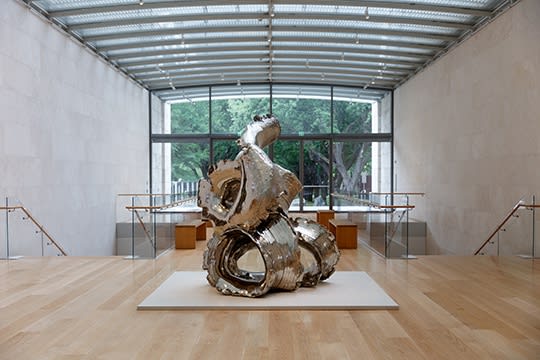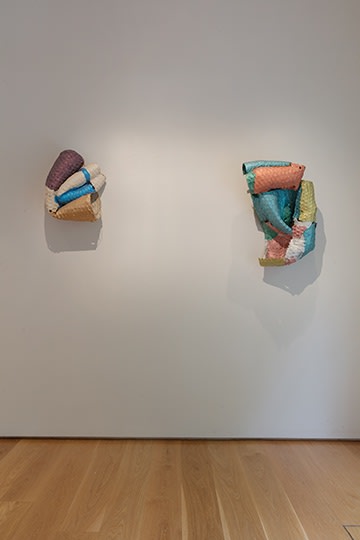In the Garden, Benglis makes use of the water features by installing recently-created monumental fountains. Beginning in the 1960s with her poured latex paintings, for which the artist dripped and poured pigmented latex directly onto the floor, Benglis has been concerned with reconciling states of liquidity and solidity. By the early 1980s, with her first fountain developments, Benglis incorporated actual movement and flow into her work (as opposed to the static image or illusion of it). The added element of water over the surfaces of her sculptures further underscores the impression of gestural and spontaneous processes inherent in her latex and polyurethane pours of the 1960s and 1970s and gives the appearance of an object in continual transformation.
Installed inside the Nasher, large bronze sculptures based on earlier ceramic works represent the importance of metal casting in Benglis’s practice—something she has engaged in since the early 1970s—while several works from her series of wall-based chicken wire, paper, and glitter sculptures demonstrate the artist’s commitment to surface ornamentation and engagement with issues of artistic taste and value. The exhibition's focus on new and recent work by the artist traces Benglis's long-abiding interests in gestural and organic forms and her use of casting as a means of extending her working process, enabling her to explore variations of surface, color and scale.







